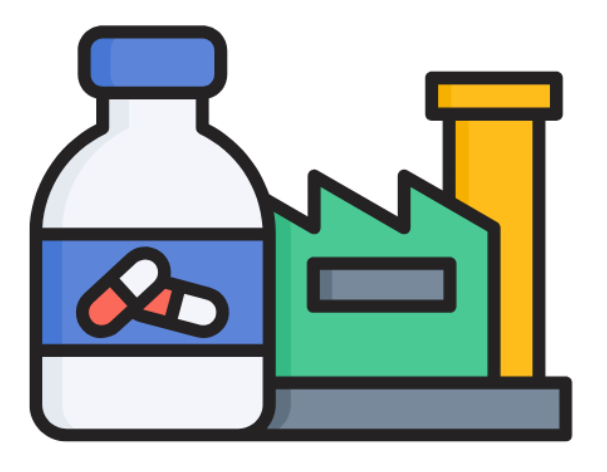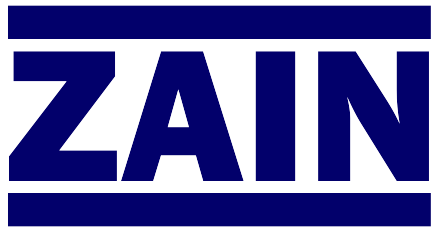Optimizing Pharmaceutical Production with Advanced Mixing Equipment
Pharmaceutical manufacturers face stringent quality requirements, tight timelines, and ever-evolving formulations. Advanced mixing equipment plays a pivotal role in ensuring consistent product quality, efficient processing, and regulatory compliance. This guide dives deep into how modern mixing technologies can optimize pharmaceutical production, exploring critical design features, process validation, monitoring strategies, and real-world examples that illustrate the tangible benefits of investing in the right equipment.
Why Advanced Mixing Matters in Pharmaceutical Production
Effective mixing ensures uniform dispersion of active pharmaceutical ingredients (APIs), excipients, and solvents, which directly impacts dosage accuracy, product stability, and bioavailability. Incomplete or uneven mixing can lead to dose variability, failed quality tests, and costly batch rejections. Moreover, optimized mixing reduces processing time and energy consumption, contributing to overall facility productivity and cost savings. By choosing advanced mixing equipment tailored to pharmaceutical requirements, manufacturers can achieve reproducible results, minimize waste, and accelerate time-to-market for critical therapies.

Key Features of Advanced Pharmaceutical Mixing Equipment
Hygienic, Sanitary Design
Pharmaceutical mixers must adhere to strict sanitary standards to prevent contamination and facilitate thorough cleaning. Equipment designed for clean-in-place (CIP) and steam-in-place (SIP) operations ensures that all wetted surfaces can be effectively sanitized without disassembly. Polished stainless-steel interiors, minimal crevices, and sanitary seals are essential design elements. Advanced mixers may include quick-release agitator shafts, hygienic mechanical seals, and surface finishes optimized for low residue retention. Such features not only support regulatory compliance (e.g., FDA’s 21 CFR Part 211 guidelines on equipment cleaning and use logs, fda.gov) but also reduce downtime between batches.
Precise Temperature and Shear Control
Many pharmaceutical processes—such as suspending heat-sensitive APIs or emulsifying lipid-based formulations—require tight control over temperature and shear forces. Advanced mixing equipment offers variable-speed drives, programmable speed profiles, and integrated jacketed vessels for precise thermal management. High-shear mixers or rotor-stator designs can create fine emulsions or dispersions when needed, while low-shear configurations preserve delicate biomolecules. Proper control of shear rate and mixing intensity helps maintain molecular integrity and ensures consistent particle size distribution, crucial for product performance.
Scalable Design for Lab-to-Production
Translating lab-scale processes to commercial production is a frequent challenge. Advanced mixers often come with geometrically similar designs across scales, facilitating scale-up with minimal re-optimization. Pilot-scale vessels mimic production-scale agitator geometry, allowing engineers to maintain similar mixing regimes (e.g., tip speed, power per volume) during development. This approach reduces variability when moving from R&D to full-scale manufacturing, mitigating risks of batch failures or reformulation during scale-up
Regulatory and Validation Considerations
Equipment Qualification (IQ/OQ/PQ)
Under current Good Manufacturing Practices (cGMP), mixing equipment must undergo a qualification process to demonstrate suitability for intended use.
- Installation Qualification (IQ): Verifies correct installation according to manufacturer specifications.
- Operational Qualification (OQ): Confirms equipment operates within defined parameters (e.g., speed ranges, temperature limits).
- Performance Qualification (PQ): Demonstrates consistent performance under real production conditions, ensuring reproducible mixing outcomes.
Validation protocols involve documenting test procedures, acceptance criteria (e.g., blend uniformity tests, temperature control accuracy), and results. Referencing FDA guidance on process validation helps structure these activities and ensures that mixing systems do not negatively impact product quality.
Cleaning Validation & Contamination Control
Pharmaceutical mixers must be validated for cleaning to ensure no cross-contamination between different products or batches. Cleaning validation involves worst-case scenario testing—selecting the hardest-to-clean product residues, defining acceptance limits based on toxicological data, and demonstrating that CIP/SIP procedures consistently achieve the desired cleanliness level. Software-enabled validation protocols can capture cleaning data, log equipment usage, and maintain audit trails required during inspections. Effective cleaning validation safeguards patient safety and maintains regulatory compliance.
Process Analytical Technology (PAT) and Real-Time Monitoring
Inline Monitoring of Mixing Parameters
Process Analytical Technology (PAT) encourages real-time monitoring and control of critical quality attributes during pharmaceutical manufacturing. Integrating inline sensors—such as torque sensors, inline viscometers, or acoustic or NIR probes—allows continuous assessment of mixture consistency, viscosity, and concentration. For example, monitoring torque or power draw during mixing can indicate changes in viscosity or unexpected phase separation. Real-time data helps operators detect deviations early, adjust mixing parameters on the fly, and reduce out-of-spec batches.
Data-Driven Optimization
Collecting and analyzing mixing data over multiple batches enables identification of trends and optimization opportunities. Advanced mixing systems can log parameters such as mixing time, temperature profiles, shear rates, and equipment loads. By applying statistical process control (SPC) and multivariate analysis, manufacturers can refine mixing recipes—adjusting speed profiles or mixing durations to achieve target particle size distributions or homogeneity. Such data-driven approaches enhance robustness and can shorten process development cycles.
Automation and Recipe Management
Automated Control Systems
Modern pharmaceutical mixers often integrate with programmable logic controllers (PLCs) and distributed control systems (DCS) to automate mixing sequences. Recipe management systems store validated mixing protocols—defining agitator speeds, temperature ramps, ingredient addition points, and hold times. Automated execution ensures consistent adherence to validated processes and reduces human error. For instance, a mixer might initiate heating to a set temperature, ramp agitator speed according to a multi-stage profile, pause for sample checks, and then proceed to the next stage automatically. This level of control improves reproducibility and facilitates compliance documentation.
Integration with Manufacturing Execution Systems (MES)
Linking mixing equipment to MES platforms provides centralized oversight of production operations. MES integration allows scheduling of mixing batches, tracking batch genealogy, and associating process parameters with specific product lots. With digital batch records, deviations can be traced and reviewed promptly. Furthermore, integration aids in coordinating downstream processes—such as granulation or drying—by signaling when mixing is complete, optimizing overall production flow.
Case Study Scenario: Streamlining API Suspension
Consider a mid-sized pharmaceutical company developing an oral suspension containing a poorly soluble API. Initial lab trials used a small high-shear mixer but faced challenges in achieving uniform particle size, leading to sedimentation issues. By selecting an advanced mixing system with the following features, the company optimized its process:
- Jacketed, Agitated Vessel with PID Temperature Control: Maintained consistent temperature to control API solubility and prevent thermal degradation.
- Variable-Speed High-Shear Rotor-Stator Mixer: Enabled precise control of shear rate to achieve narrow particle size distribution, improving suspension stability.
- Inline Viscometer & Turbidity Sensor: Provided real-time feedback on viscosity and uniformity, allowing immediate adjustments to mixing speed and duration.
- Automated Recipe Execution: Ensured repeatable mixing sequences across batches, reducing variability and speeding up batch qualification.
As a result, the company achieved a stable suspension with extended shelf life, reduced rework, and faster scale-up to production volumes. This scenario underscores how advanced mixing equipment, combined with real-time monitoring and automation, can solve formulation challenges effectively.
Maintenance, Calibration, and Lifecycle Management
Proactive Maintenance & Calibration
Ensuring mixing equipment operates reliably over its lifecycle requires scheduled maintenance and calibration of critical components (e.g., torque sensors, temperature probes). Predictive maintenance strategies—leveraging vibration analysis or motor current monitoring—can identify wear in bearings or seals before failures occur. Calibrated sensors guarantee accurate process readings, which is vital for PAT-driven control. A proactive maintenance plan minimizes unplanned downtime, safeguards batch integrity, and extends equipment lifespan.
Equipment Qualification After Upgrades
When mixers are upgraded—such as retrofitting new control modules or adding sensors—requalification (OQ/PQ) is necessary to confirm that performance remains within validated ranges. Thorough documentation of modifications, updated risk assessments, and revalidated protocols ensures continuous compliance. Partnering with experienced equipment suppliers who understand cGMP requirements facilitates smooth upgrades and reduces validation burdens.
Future Trends: Continuous Manufacturing and Advanced Mixing
Continuous Mixing and Flow Chemistry
Pharmaceutical manufacturing increasingly adopts continuous processes to enhance efficiency and flexibility. Continuous mixing equipment—such as inline static mixers or continuous stirred-tank reactors (CSTRs)—enables seamless integration with flow chemistry modules for API synthesis. Inline mixing can maintain steady-state conditions, improving reaction yields and reducing batch-to-batch variability. Advanced mixing control in continuous systems relies on precise flow rates, temperature control, and PAT tools for real-time monitoring.
Advanced Materials and Coatings
Emerging pharmaceutical processes may involve highly reactive or corrosive chemistries. Advanced mixing vessels with specialized coatings or glass-lined interiors provide enhanced corrosion resistance and product compatibility. Such designs extend equipment longevity while ensuring product purity. Additionally, novel impeller materials (e.g., ceramic-coated) can address wear in abrasive mixing tasks.
Related Resources
- Process Validation Guidance (FDA): Understand stages of process qualification and equipment validation: fda.gov
- Mixing Equipment Selection for Pharma: Reference guide outlining mixer types and applications: vortexmt.com
- CIP & SIP Best Practices: Guidance on cleaning validation in pharma: tsaprocessequipments.com
- PAT Implementation in Mixing: Overview of Inline Monitoring Tools and Analytics for Process Control.
- Continuous Manufacturing Trends: Insights on integrating mixing in continuous pharmaceutical production.
Conclusion
Optimizing pharmaceutical production through advanced mixing equipment involves careful consideration of sanitary design, process validation, real-time monitoring, automation, and lifecycle management. By leveraging hygienic mixers with precise shear and temperature control, integrating PAT tools, and automating validated recipes, manufacturers can achieve consistent, high-quality products while reducing downtime and waste. Future trends like continuous mixing promise further efficiency gains but require robust control strategies and validated workflows. If you have questions or need assistance selecting and implementing advanced mixing solutions for your pharmaceutical processes, reach out to our experts to get started.

